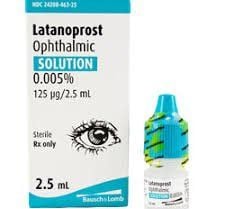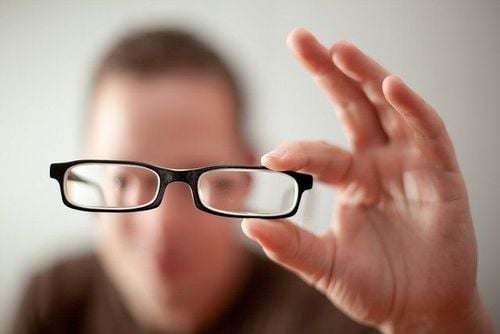This is an automatically translated article.
Ocular palsy is one of the eye diseases with complicated clinical manifestations. Patients may have paralysis of one or more oculomotor muscles. So what is paralyzing vision? Recognition and treatment.1. What is schizophrenia?
Ocular palsy is a symptom of eye disease. Each eye consists of 6 extrinsic and 2 intrinsic oculomotor muscles. Ocular palsy can paralyze 1 or more of the oculomotor muscles mentioned above.In which, 6 foreign oculomotor muscles include 4 rectus muscles: upper rectus muscle, inferior rectus muscle, inner rectus muscle and outer rectus muscle 2 oblique muscles including small oblique muscle, large oblique muscle involved in movements of the eyeball. Two intrinsic oculomotor muscles include the ciliary body and the pupillary constrictor, which are involved in the ability to focus and accommodate.
Paralysis of eye movement is divided into 2 types:
Strabismus: Paralysis of one or more extraocular muscles disproportionately two eyes Paralysis of binocular fusion. The extrinsic oculomotor muscles are innervated by the third, fourth, and sixth nerves. In which: the third nerve is responsible for controlling the rectilinear muscles, closing the eyes. Nerve number VI has the effect of controlling the external rectus muscle, which governs the eye movement
Therefore, if these nerves are damaged, it will cause ophthalmic paralysis.
2. Recognizing symptoms of ophthalmoplegia
Double vision Double vision is a typical symptom of ophthalmoplegia. The greater the strabismus, the more pronounced the visual acuity is.In 3rd cord palsy, it is possible to have simple transverse diplopia if only the inner rectus inner branch is affected, but most often vertical diplopia affects both the vertical and oblique muscles.
Strabismus is one of the typical symptoms of ophthalmoplegia. The angle of strabismus changes in different directions of view, the largest angle of strabismus is when looking in the direction of action of the paralyzed muscle
Limited ophthalmic movement The field of action of the paralyzed muscles is limited. Limited eye movement is the initial symptom of strabismus.
To check eye movement, the doctor will ask the patient to look in 9 different directions: look straight, look right, look left, look up, look down, look up right, look up left side, look down right, look down left to determine ophthalmic limitation and compare binoculars.
Other symptoms When suffering from ophthalmoplegia, patients may have corneal sensory disturbances, decreased or lost pupillary reflexes, and dilated pupils. On ophthalmologic examination, papilloedema and hemorrhage may appear. For accurate assessment, the patient will need to do some additional eye exams such as optometry, intraocular pressure, visual field, and ophthalmometry.
When there is total paralysis of the III nerve, the patient has symptoms of complete drooping of the eyelids, the eyes are crossed out and slightly compressed. All sides of the eye are restricted except for a glance.
IV nerve is intact, however, on examination, rotation is observed during eye pressure test.

Lác là triệu chứng điển hình của liệt vận nhãn
3. Causes of ophthalmoplegia
There are many causes of ophthalmoplegia , some of which are common:Trauma
Traumatic brain injury: high risk of isolated nerve palsy or VI nerve palsy Trauma Eye fossa injury: high risk of muscle paralysis. Brain tumor
Brain tumor can easily cause complications that damage nerves Have vascular disease
High blood pressure, which membrane hemorrhage increases the risk of ophthalmic paralysis Diabetic aneurysms easily cause nerve paralysis Period III, IV Other causes:
Genetics, infection,...

Bị chấn thương sọ não có nguy cơ liệt vận nhãn
4. Can ophthalmoplegia be treated?
Ocular palsy requires a long treatment time and a combination of different methods. The earlier the detection, the shorter the treatment time, so when there are abnormal signs in the eyes, it is necessary to quickly go to reputable medical facilities to be checked.The purpose of treatment includes correcting the axis of the eyeball, improving eye movement, widening the field of vision, eliminating double vision, limiting the position of the head and neck.
Treatment method for ophthalmoplegia depends on the cause of the disease, but the principle of treatment of ophthalmoplegia is to correct the deviation of the eyeball axis, eliminate double vision, widen the field of vision, and improve the ocular movement.
Non-surgical treatment by alternating blindfolds in both eyes to limit double vision, wearing prisms to preserve vision and avoiding double vision, practicing eye movement to see in different directions, and injecting Botulinum.
Indications for surgery when the ophthalmoplegia has stabilized, usually after about 6 months of treatment.
If you are experiencing vision problems, go to a medical facility immediately to be examined and treated by doctors as soon as possible. Currently, Vinmec International General Hospital has vision-related service packages such as:
Refractive error screening package Cataract surgery consultation and examination package Ortho-K package Good team of doctors with Modern equipment at Vinmec will help you quickly detect ophthalmic diseases and treat them promptly.
Please dial HOTLINE for more information or register for an appointment HERE. Download MyVinmec app to make appointments faster and to manage your bookings easily.













